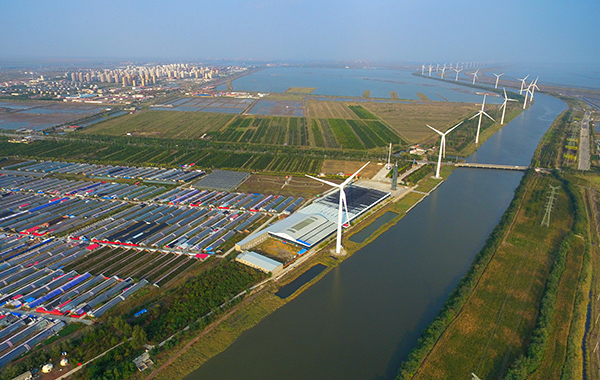Haibin Subdistrict
Updated : 2023-06-12
Print Print
Haibin Subdistrict is situated in the southern part of Binhai New Area, bordered by Nangang Industrial Zone to the east and Huanghua City in Hebei Province on the opposite side of the river to the south. It is an integral part of the southern urban area of Binhai New Area,covering an area of approximately 158 square kilometers. The subdistrict is home to a permanent population of around 230,000 people, including over 7,000 individuals from 37 ethnic minority groups and more than 10,000 rural residents. The subdistrict encompasses six administrative villages, including one Hui ethnic village, as well as 39 community neighborhood committees.
The Suaeda Grass Viewing Corridor, the longest wooden corridor in the oilfield, offers visitors a breathtaking view of the sprawling red sea formed by the continuous suaeda grass. The subdistrict is also home to four large state-owned enterprises: Dagang Oilfield Company, Dagang Petrochemical Company, Bohai Equipment Company, and Bohai Drilling Company. Additionally, there are over 1,600 various types of enterprises and institutions, as well as more than 5,500 individual businesses.
Haibin Subdistrict features an industrial park spanning approximately 131.12 hectares and a planned construction land area of 125.98 hectares. Of this, 49.82 hectares are allocated for industrial use, and 14.38 hectares for commercial purposes. The industrial park focuses on high-end equipment and enterprise incubation, particularly in machinery processing and metal manufacturing.
Currently, 16 enterprises operates within the park, including Aokai Oil Machinery Co., Ltd., Pusen Drilling Equipment Co., Ltd., and Helifeng Metal Manufacturing Co., Ltd. The primary industries revolve around equipment manufacturing and machinery processing. Haibin Subdistrict aims to enhance the industrial chain by attracting new projects. It is gradually forming five major advantageous industries:clean energy, machinery and electronics, equipment manufacturing, cutting-edge technology, and modern agriculture.